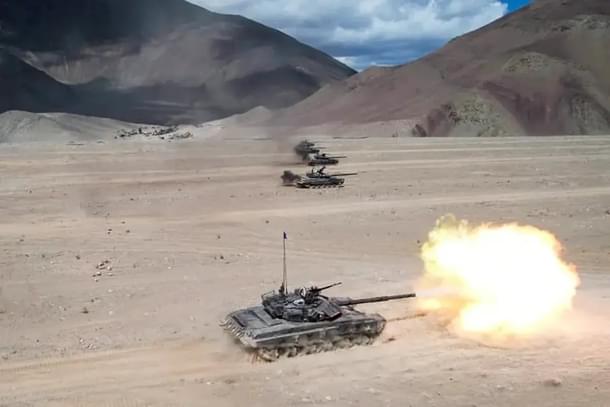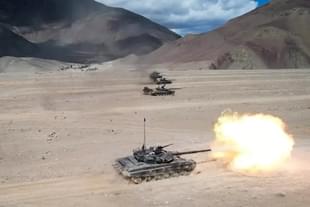Defence
Indian Army Conducts High-Altitude 'Parvat Prahaar' Exercise Close To China Border In Eastern Ladakh
Ujjwal Shrotryia
Aug 09, 2024, 02:39 PM | Updated Aug 19, 2024, 03:18 PM IST
Save & read from anywhere!
Bookmark stories for easy access on any device or the Swarajya app.


The Indian Army is conducting a complex corps-sized military exercise, 'Parvat Prahaar,' close to the China border in Eastern Ladakh.
Parvat Prahaar is a strategic military exercise primarily focused on high-altitude mountain warfare, developing and validating tactics to be used in a war-like situation against China in Eastern Ladakh.
The Northern Command’s mountain strike corps, the 1st Strike Corps, now oriented towards operations against China at the Line of Actual Control (LAC), is participating in this exercise.
The exercise, expected to continue for about two weeks, will involve real-world scenarios that will train soldiers on how to efficiently operate in the harsh climate of the Himalayas.
Tanks like the T-72 and T-90, K-9 Vajra-T self-propelled howitzers, unmanned aerial vehicles (UAVs), swarm drones, loitering munitions, anti-air defence systems, and helicopters are participating in this exercise.
This exercise is primarily to train the re-oriented corps to get up to speed for mountain warfare.
The 1st Strike Corps, based in Mathura until three years ago, was oriented towards operations against Pakistan in the plains of Punjab and the deserts of Rajasthan and was part of the South-Western Command headquartered in Jaipur, Rajasthan.
In 2021, it was reorganised under the Northern Command to focus on China after the standoff with China in Eastern Ladakh.
The standoff began after a series of clashes between the Indian Army and Chinese soldiers at Pangong Tso Lake and Galwan Valley in May and June 2020. The clashes in Galwan, on the intervening nights of June 15-16 2020, left twenty Indian and an unknown number of Chinese soldiers dead.
Since then, India has deployed more than 50,000 additional troops, along with 500 tanks, artillery, and supporting infrastructure, in the mountains of Eastern Ladakh.
The standoff, which is now in its fifth year, shows no signs of easing since the Chinese do not seem interested in restoring the status quo before 2020, which has been a consistent demand of India in several military and civilian meetings held to defuse the standoff.
Staff Writer at Swarajya. Writes on Indian Military and Defence.





